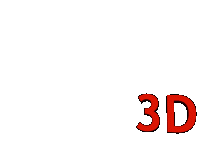

|
Corals are not plants or rocks. They are animals! They are some of the world's smallest animals and they come in all shapes, sizes and colors. Each coral is a colony of tiny animals that are called “polyps”. All the corals you see in Ocean wonderland 3D are in fact made up of hundreds or thousands of these “mini-animals” or polyps. Each polyp is a very simple animal, shaped like a cylinder, but with numerous tentacles around the top. These tentacles wave about in the open ocean and catch tiny animals and scraps of food, which they pass into their central mouth. Polyps have a skeleton, which they build by absorbing calcium carbonate dissolved in the seawater. Unlike most other animals, each polyp is fixed firmly to the ground, or to a neighboring polyp. As polyps create more polyps, their skeletons become joined together and form a colony, a sort of super-animal - and that’s a coral. Clustered together, corals build a communal skeleton of limestone, and there they sit, unmoved by waves, and unable to move themselves. Under the right conditions, individual corals can reach tremendous sizes. Over the centuries, skeletons grow upon skeletons, and vast structures of limestone are formed that are visible even from space. In fact, coral reefs are the only structures built by animals that can be seen from the moon. Corals are sensitive creatures that require warm, clear waters and bright sunlight. They can survive in waters from 64.4 to 84.2°F. Due to their need for sunlight, they can only grow in shallow areas, and if the water is murky the light often can’t get through. Increasing human activities such as coastal development, deforestation, sewage, pollution, destructive fishing practices, the souvenir trade, careless tourism and recreational diving have seriously threatened the well being of coral reefs. To learn more about the dangers threatening corals, please click on Threqts . To know what can be done to safe corals, please click Save the reefs. |
|